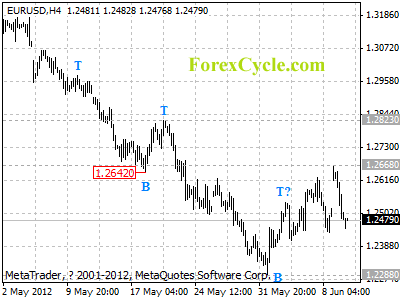Another one bites the dust.
Portugal, Ireland and Greece have all accepted bailouts from the eurozone. Now Spain has followed in their footsteps.
A Spanish bailout would seek as much as €100bn from the eurozone’s rescue funds, to recapitalise Spain’s banks.
So what is the deal all about – and can it save the eurozone?
How a Property Bubble Ruined Spain
Spain’s economic problems are very similar to those of Ireland. Spain’s eurozone nightmare started as a private sector bubble, rather than a public sector spending binge.
Overly-low interest rates led to a huge property bubble in Spain. Prices rose too far and too fast. Builders were encouraged to build too many properties. So you ended up with the lethal combination of over-supply plus over-pricing. Then came the bust.
Unlike Ireland, Spain’s bubble took time to deflate, partly because its banks used various ‘extend and pretend’ tactics to conceal the level of carnage in the market. But with the economy weakening rapidly, the property market is following suit.
Most people didn’t believe Spanish banks were ever being realistic about the level of property-related losses on their balance sheets. And they were right. Last month’s bailout of Bankia, Spain’s fourth-largest bank, just proved it. And there are more problem banks where that came from.
So here’s the difficulty. The Spanish government needs to bail out Spain’s banks. But the Spanish government doesn’t have enough money to do that. It can’t borrow more on the market, because bond yields are already too high.
Up until now, Spain has tried to avoid requesting a bail-out from Europe. That’s because it doesn’t want to have the International Monetary Fund and the rest of Europe telling it what to do.
The deal now is that it will ask for the €100bn, but that it’s solely to recapitalise the banks. That means it won’t technically have to have the same levels of oversight as the bail-outs of Ireland, Greece and Portugal incurred.
Europe’s bailout funds will lend the Spanish government the money at low rates. This will then go into a specific fund created to recapitalise the banks (the Fund for Orderly Bank Restructuring, or FOBR).
The Big Problem With the Spanish Bailout
We’ll put aside the question of precisely where the money is going to come from for now. Italy, for example, will now have to guarantee 22% of the funds, which seems a stretch given the state that the country is in. I suspect they’ll find a way to fudge it somehow.
There’s a bigger, deeper structural problem with this way of bailing Spain out. The loan from the eurozone almost certainly (in practice, if not in theory) will jump the creditor queue. In other words, if the Spanish government ever runs out of money, then the European loan will get paid ahead of any private sector bondholder.
This is what happened with Greece. The private sector ended up taking huge ‘haircuts’, while the public sector (on paper at least) remained whole.
By bailing out the banks this way, not only does the Spanish government end up owing more money, private sector lenders have been pushed down the line for payback. In other words, lending to Spain has just become even more risky.
And by extension, so has every other European sovereign that might potentially need a bailout – Italy, for example. So the question is, why would any private sector investor in their right mind lend money to a troubled eurozone sovereign now?
I can’t think of a good answer. And that suggests that – without more action from Europe to prevent it – yields on European debt should rise even further.
John Stepek
Contributing Editor, Money Morning
Publisher’s Note: This article originally appeared in MoneyWeek (UK)
From the Archives…
Why You Should Wish For a Falling Market
2012-06-08 – Greg Canavan
Why the U.S. Dollar is Really Rising
2012-06-07 – Keith Fitz-Gerald
How This Bear Market Could Last Another 18 Years… Just Like Japan’s
2012-06-06 – Kris Sayce
The Banking Plan That Could Be A Game-Changer for Gold
2012-06-05 – Dr. Alex Cowie
Best Investment Strategies For the Times Ahead
2012-06-04 – Nick Hubble




 Tradervox (Dublin) – Despite the poor performance of the Australian dollar in the foreign exchange market, the country’s economy has continued to do well expanding by 4.3 percent in the first quarter. Government reports are also showing that the country added 38,900 jobs in May despite the poor performance of the country during that month.
Tradervox (Dublin) – Despite the poor performance of the Australian dollar in the foreign exchange market, the country’s economy has continued to do well expanding by 4.3 percent in the first quarter. Government reports are also showing that the country added 38,900 jobs in May despite the poor performance of the country during that month.